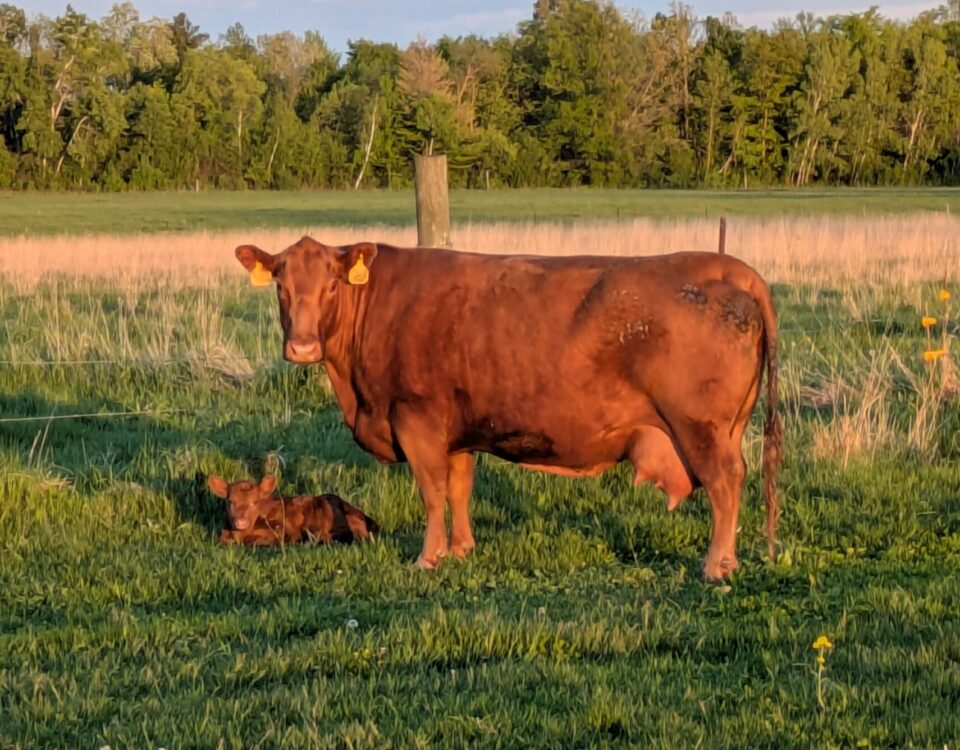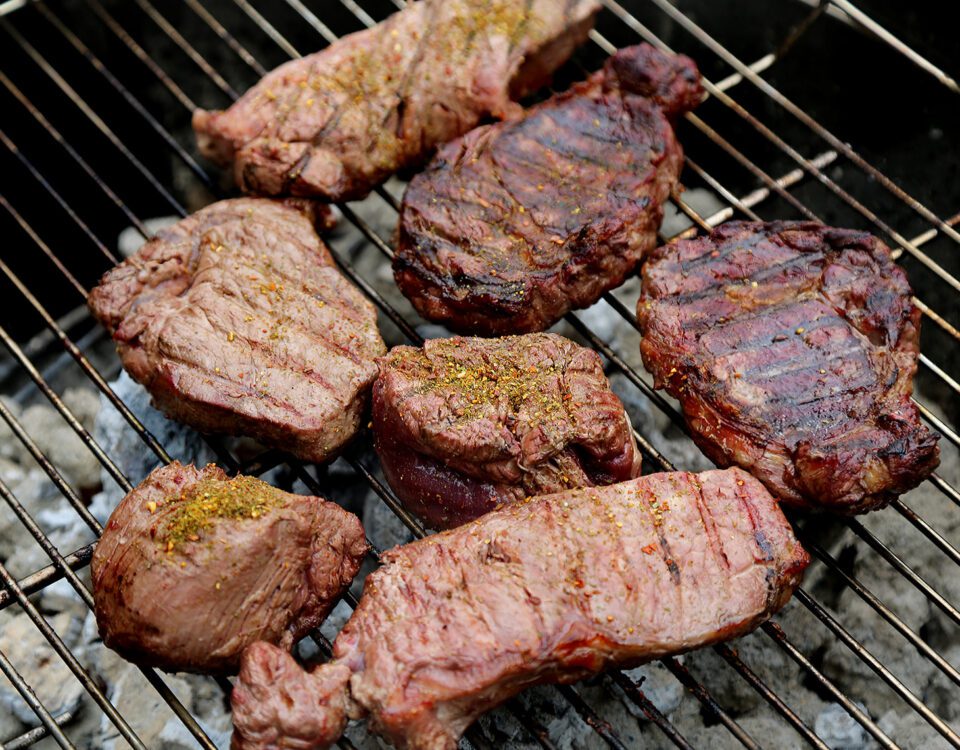
Wisconsin Meadows Products to be Shipped using 100% Curbside Recyclable Boxes
March 7, 2024
Should I be concerned about bird flu in cows?
April 22, 2024According to the USDA National Agricultural Statistics Service, the total US beef cattle inventory is at its smallest level since 1961 (figure 1).

Figure 1: January 1 U.S. Beef Cow Inventory (1940 to 2024) [1,000 head][1]
This decline is primarily attributed to a combination of factors, most importantly drought and high input costs. Beef prices throughout the supply chain have gone up dramatically since summer of 2020. Prices paid to beef producers for the animals they raise are up by 80% for steers & heifers (so-called “finished beef cattle”) and by over 100% for calves over that time period (figure 2), and are expected to continue to rise in the latter half of 2024 and even into 2025.

Figure 2. Prices Received for Beef Cattle by Month, US [Dollars per hundred weight][2]
At the retail level, as we are all too familiar with, prices for beef have also gone up (figure 3).

Figure 3. Average price per pound, all uncooked beef steaks (2014-2024)[3]
Which brings us to our prices. The Wisconsin Grass-fed Beef Cooperative was founded over a decade ago on the principle that our members deserve a premium price for the premium product they produce. Regenerative pasture management practices and the highest animal husbandry standards take added time and cost more to implement. We are proud that we have been able to offer our members a price for their finished beef cattle that is roughly 20% above conventional prices on average over the lifetime of our cooperative. Right now, however, with prices for conventional beef cattle (both calves and finished steers and heifers) at record highs, we have frankly struggled to keep up. Over the past 24 months, despite having raised the prices we pay our producers by over 20%, we have failed to maintain that premium. Our members would prefer not to sell their cattle through conventional channels, but they also can’t be expected to suffer a financial penalty for selling their cattle through our cooperative.
In a nutshell, that’s why we are raising our prices. For every additional 10¢/lb we pay our member producers for their finished cattle, our finished beef products become something like 17¢/lb more expensive.[4] So, every time we raise the price we pay our producers by 10¢/lb we should raise the prices we charge our customers by at least 17¢/lb to avoid losing money risking the long-term health of the cooperative.
The next increase in pay price to our member producers will make the price we pay them 60¢/lb higher than it was in early 2022, which makes the cost of our beef closer to $1/lb more expensive on average. Of course, that figure only accounts for the increased costs associated with paying our members more for their cattle. During that same period, almost every cost associated with producing Wisconsin Meadows grassfed beef products has gone up: processing (mostly due to increasing labor costs), packaging, transportation, etc.
As strange as it might seem, we do not like raising our prices. We believe our wholesome, natural, Wisconsin-made products should be available and affordable for every family to purchase and enjoy. We simply cannot avoid it – both for the sake of our member-owners, and for the long-term health and viability of our cooperative.
We look forward to being able to lower our prices sometime in the future, and until that time, we appreciate your support for the member-owners of Wisconsin Meadows and the Wisconsin Grass-fed Beef Cooperative!
By: Josh Miner, Wisconsin Grass-fed Beef Cooperative
[1] Burdine, K. “U.S. Beef Cow Inventory Continues to Decline.” Economic and Policy Update (24):2, Department of Agricultural Economics, University of Kentucky, February 2, 2024.
[2] Source: USDA-NASS 2/29/2024
[3] Source: US Bureau of Labor Statistics, Consumer Price Index Average Price Data
[4] This is due to the fact that only around 60-65% of a typical beef carcass becomes edible beef products after butchering.




